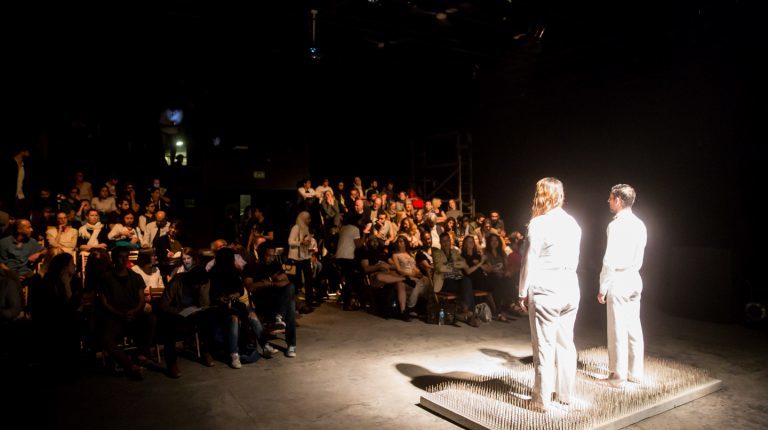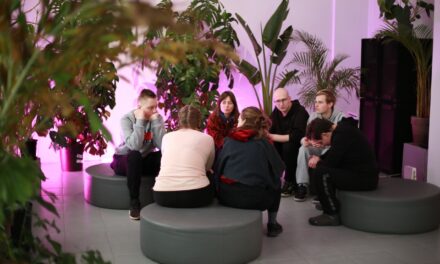In a dimly lit room, where the surrounding black walls invaded one’s soul, leaving attendees alerted with frustration and apprehension, only two performers under bright yellow spotlights, standing still, welcoming attendees with emotionless faces and what looks like soulless bodies, started the journey of time travel to Egyptian daily lives before the January 25, 2011 revolution.
Before The Revolution is a 40-minute show, which draws the lines of frustration, agony, and despair that Egypt had witnessed before the revolution, leaving the audience to connect and build between the events that had led to a mass uprising.
The performance was part of the Downtown Contemporary Arts Festival (D-CAF)’s program.
Written by Egyptian artist Ahmed Al-Attar, and performed by Ramzy Lehner and Nanda Mohammed, the show brings the audience a glimpse of events that portrayed Egyptian personalities and insistence of protesting against former president Hosny Mubarak’s regime.
In Downtown’s Rawabet Theatre, with emotionless faces, loud voices, and frozen bodies, Lehner and Mohammed recalled some of the political, social, and economic conditions of Egyptians from different social classes and ages. In a press release, Before The Revolution was described as a play which “places audiences in an emotional and intellectual moment by portraying the stagnation before an inevitable eruption.”
The show started with the recitation of people’s names, who the audience cannot tell who they are or why their names were told with their ages and addresses. Jumping from one topic to another, the audience remained for a while unaware before recognizing the theme of the performance, as it clearly revealed that the recalled people are those who innocently lost their lives out of negligence by the authorities.
“With a more experimental format, the play’s aim is to transport audiences to an alternate state, allowing them to better understand not just the causes that led to the revolution, but also the event itself, the times that came after it, and the future that stemmed from it,” the brochure read.
Despite quick plot transitions, the stories took the audience from one scene to another smoothly to bring them the life of those whose stories were being told.
This article originally appeared in Daily News Egypt on April 2, 2018, and has been reposted with permission.
This post was written by the author in their personal capacity.The opinions expressed in this article are the author’s own and do not reflect the view of The Theatre Times, their staff or collaborators.
This post was written by Nada Deyaa’.
The views expressed here belong to the author and do not necessarily reflect our views and opinions.


















